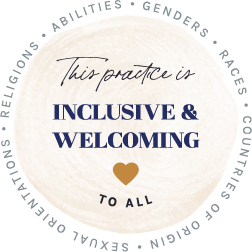Understanding Chronic Emptiness and its Impact on Those Who Experience it During the Holidays
Coping ahead of time for difficult situations is an important skill to develop for those who struggle with intense emotions.
The holidays, as noted in the Seasonal Dread post, are particularly difficult for people with mental illness which makes this a perfect time to master a process that can make a significant difference in your experience of the holidays whether you are a family member of or a person who feels empty much of the time.
Before leaping into the 5-step process known in DBT as Coping Ahead, it’s helpful to appreciate what chronic emptiness feels like to the individual through the lens of Borderline Personality Disorder. For the person with BPD as well as others who may experience a chronic sense of emptiness, especially as it is associated with trauma there is frequently an accompanying sense of, “not knowing who I am” which we refer to as, “unstable identity.”

Understanding Chronic Emptiness and Unstable Identity in BPD
“Chronic feelings of emptiness” is one of the 9 diagnostic criteria for borderline personality disorder. Yet there are no clear definitions or descriptions of exactly what the authors meant when they used the terms.
Regardless of the diagnosis, be it medical or psychological, it has served me well to go directly to the experts (in this case, clients, families, and friends who identify as having borderline personality disorder) for a more clear understanding.
Some clients and friends have described it as:
- Having a sense that something is missing feeling like they don’t belong or fit in struggling to trust others
- Having trouble identifying a purpose for their lives
- Difficulty choosing and sticking with accomplishing personal goals even though many can achieve goals someone else sets for them
- Being unable to answer questions like,“Why bother?” or “What’s the point?”
- Engaging in compulsive accumulation of “things”
- Looking for happiness outside of themselves because the inside emotional experience is so painful
Many describe engaging in the following behaviors:
- Frequently trying new hairstyles and wardrobe looks
- Jumping from one hobby to the next
- Picking up the characteristics of whatever group they are currently a part of
- Switching opinions and beliefs easily
- Creating false identities or stories about themselves
- Being chronically indecisive and changing their minds moment to moment
- Switching majors, jobs, apartments frequently
- Being made of a mishmash of qualities they have “stolen” or “learned I am supposed to have,” from other people—none of which are their own
What might chronic emptiness behaviors look like during the holidays?
- Increased depression and/or anxiety
- Avoiding/refusing to attend gatherings
- Increased irritability
- Dominating or “making it all about them” in group interactions
- Believing others “ hate me” or are purposely ignoring them or leaving them out
- Increased substance use/abuse
- Increased suicidal ideation
- Increased experience of perceived crisis
- Increased isolation
- Increased self-harm

For someone with a poor sense of identity, who feels as if h/s is “not right,” or different from others in some unspecified “bad” way the expectations that surround a holiday are impossibly scary.
There are so many ways to disappoint others and so many individual personalities and environmental stimuli to tolerate at the same time for days/months on end. Fears of abandonment may be heightened and the potential to fail at something is real if exaggerated. It makes sense that an individual might dread the approach of the season.
Meanwhile family and friends may also be “dreading ahead” having experienced their loved one displaying dysfunctional behaviors that result in others feeling at best uncomfortable and at worst miserable.

The Cope Ahead Skill
In DBT we help clients develop proficiency in coping ahead for difficult situations by using the following “recipe.” For myself, as a person with moderate to severe social anxiety, the steps as described below have supported my own success in enjoying myself while navigating work related social situations.
DESCRIBE the situation likely to prompt a problem.
- Use facts only, no judgments
- Name the emotions and actions that are likely to interfere with the situation evolving successfully
DECIDE what outcome most fear will happen if it all goes wrong.
VISUALIZE/Imagine the situation clearly including smells, sounds, taste, sensations etc. as much as possible. Visualize it as if you are in the situation and it is happening right now vs watching it play out.
REHEARSE over and over in your mind handling the feared situation exactly as you want it to transpire including:
- Exactly what are you doing to cope effectively when your worst feared catastrophe happens
- What are you thinking and what words are you speaking
RELAX: follow each rehearsal with at minimum of 2 minutes of paced breathing. This is an important step as we want to link the imagined successful outcome with relaxation.
This information is not a substitute for professional advice from a Medical Doctor, Psychiatrist, or Licensed Counselor. The information provided by www.coachlisabond.com does not constitute legal or professional advice nor is it intended to be.
View full terms & disclosures




